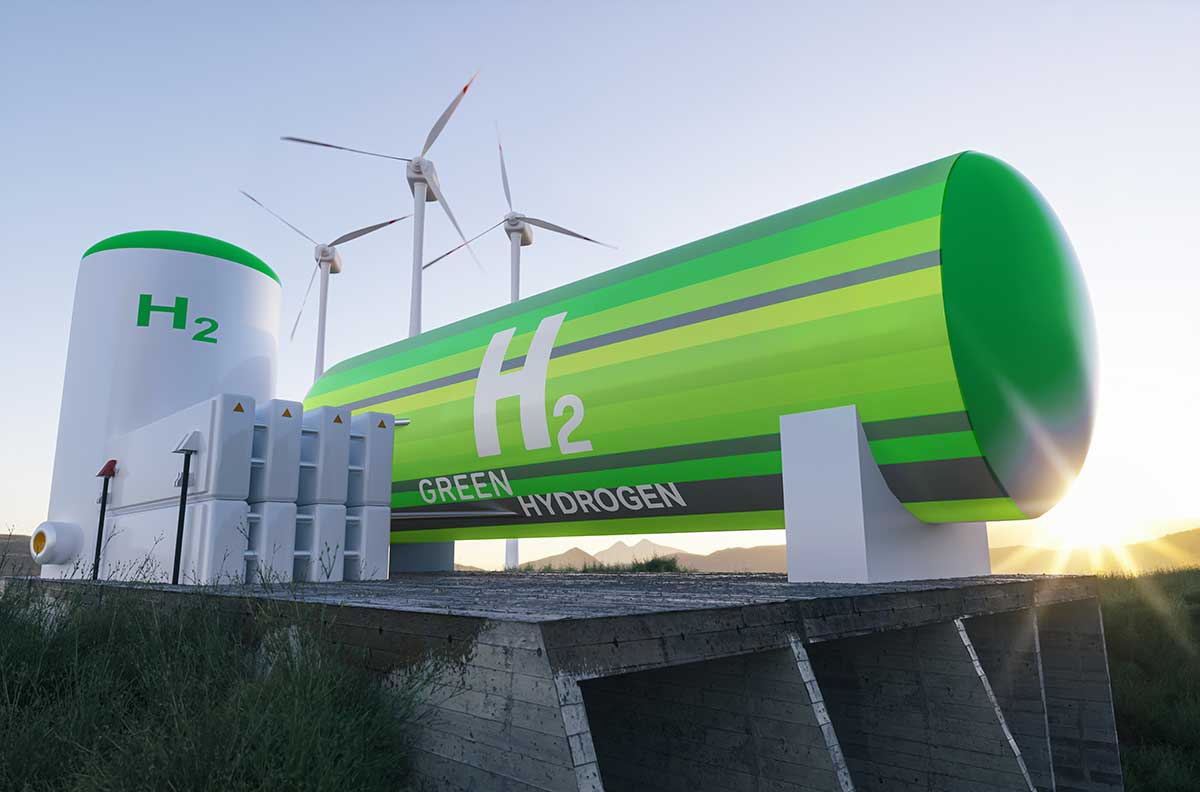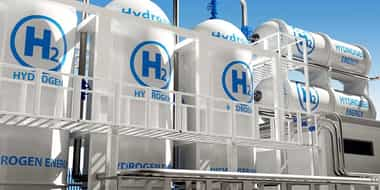
Dec 30, 2024
Blog Energy & Sustainability Green Hydrogen: The Future of Clean Energy in 2024
In today’s world, the demand for clean and sustainable energy is more urgent than ever. Climate change, increasing pollution levels, and the need for energy independence are critical issues we face. One of the most promising solutions to these challenges is green hydrogen. But what exactly is green hydrogen, and why is it being hailed as the future of clean energy?
Green hydrogen is hydrogen gas produced using renewable energy sources, such as solar, wind, or hydroelectric power, to electrolyze water. This process splits water (H2O) into hydrogen (H2) and oxygen (O2) by using electricity generated from clean sources. The resulting hydrogen fuel generates zero carbon emissions when used, making it a vital component in achieving global decarbonization goals.
In contrast to gray hydrogen, which is produced from fossil fuels and releases harmful greenhouse gases, green hydrogen is completely clean throughout its production process. This environmentally friendly approach positions green hydrogen as a key player in the fight against climate change.
In 2024, green hydrogen is poised for a pivotal transformation as it transitions from experimental and niche applications to mainstream energy solutions. Recent advancements in green hydrogen technology have significantly improved its cost-effectiveness and scalability. With numerous countries and corporations prioritizing sustainability, the demand for clean hydrogen is rapidly increasing.
According to BCC Research, the green hydrogen market in the global landscape was valued at an impressive $5.2 billion in 2024, with projections indicating it will reach $38.1 billion by 2029, growing at a robust compound annual growth rate (CAGR) of 48.7%. This remarkable growth underscores the transformative potential of green hydrogen in advancing energy transition efforts worldwide. Key drivers include technological advancements in electrolysis, declining renewable energy costs, and increased adoption across sectors such as transportation, heavy industries, and power generation. As countries push toward achieving net-zero emissions and enhancing energy security, green hydrogen is positioned to play a pivotal role in the global energy mix.

The global market for green hydrogen is expected to grow from $5.2 billion in 2024 and is projected to reach $38.1 billion by the end of 2029, at a compound annual growth rate (CAGR) of 48.7% during the forecast period of 2024 to 2029.
While the potential of green hydrogen is vast, several challenges must be addressed to realize its widespread adoption:
Despite these challenges, the future of green hydrogen looks promising. Many countries, particularly in Europe and Asia, are already making significant investments in green hydrogen. For example, the European Union has set ambitious targets to scale up hydrogen production as part of its Green Deal, and Japan and South Korea are also leading the way in hydrogen infrastructure.
Additionally, global companies such as Siemens, Shell, and Toyota are working on hydrogen technologies and partnerships to scale up the production and use of green hydrogen. Governments and industries alike recognize its role in achieving energy security, reducing emissions, and creating new economic opportunities.
Green hydrogen represents a game-changing opportunity to transition towards a more sustainable energy future. With its ability to decarbonize hard-to-abate sectors, store renewable energy, and provide clean fuel for transportation, green hydrogen has the potential to play a pivotal role in addressing the world’s energy challenges. While there are still hurdles to overcome, continued investment in research, technology, and infrastructure will pave the way for a green hydrogen-powered future. As we continue to innovate and scale up this promising technology, green hydrogen could be the key to unlocking a cleaner, more sustainable energy system for generations to come.
Consider becoming a member of the BCC Research library and gain access to our full catalog of market research reports in your industry. Not seeing what you are looking for? We offer custom solutions too, including our new product line: Custom Intelligence Services.
Contact us today to find out more.

Amrita Kumari is a Senior Executive Email Marketer at BCC Research, with a bachelor’s degree in computer applications. She specializes in content creation and email marketing.

Electrical switches—devices that control the flow of electricity—are the backbon...

As the world accelerates toward net-zero emissions, hydrogen, and ammonia have e...

Hydrogen technology is widely used across industries like glass, fertilizer, met...

We are your trusted research partner, providing actionable insights and custom consulting across life sciences, advanced materials, and technology. Allow BCC Research to nurture your smartest business decisions today, tomorrow, and beyond.
Contact UsBCC Research provides objective, unbiased measurement and assessment of market opportunities with detailed market research reports. Our experienced industry analysts assess growth opportunities, market sizing, technologies, applications, supply chains and companies with the singular goal of helping you make informed business decisions, free of noise and hype.